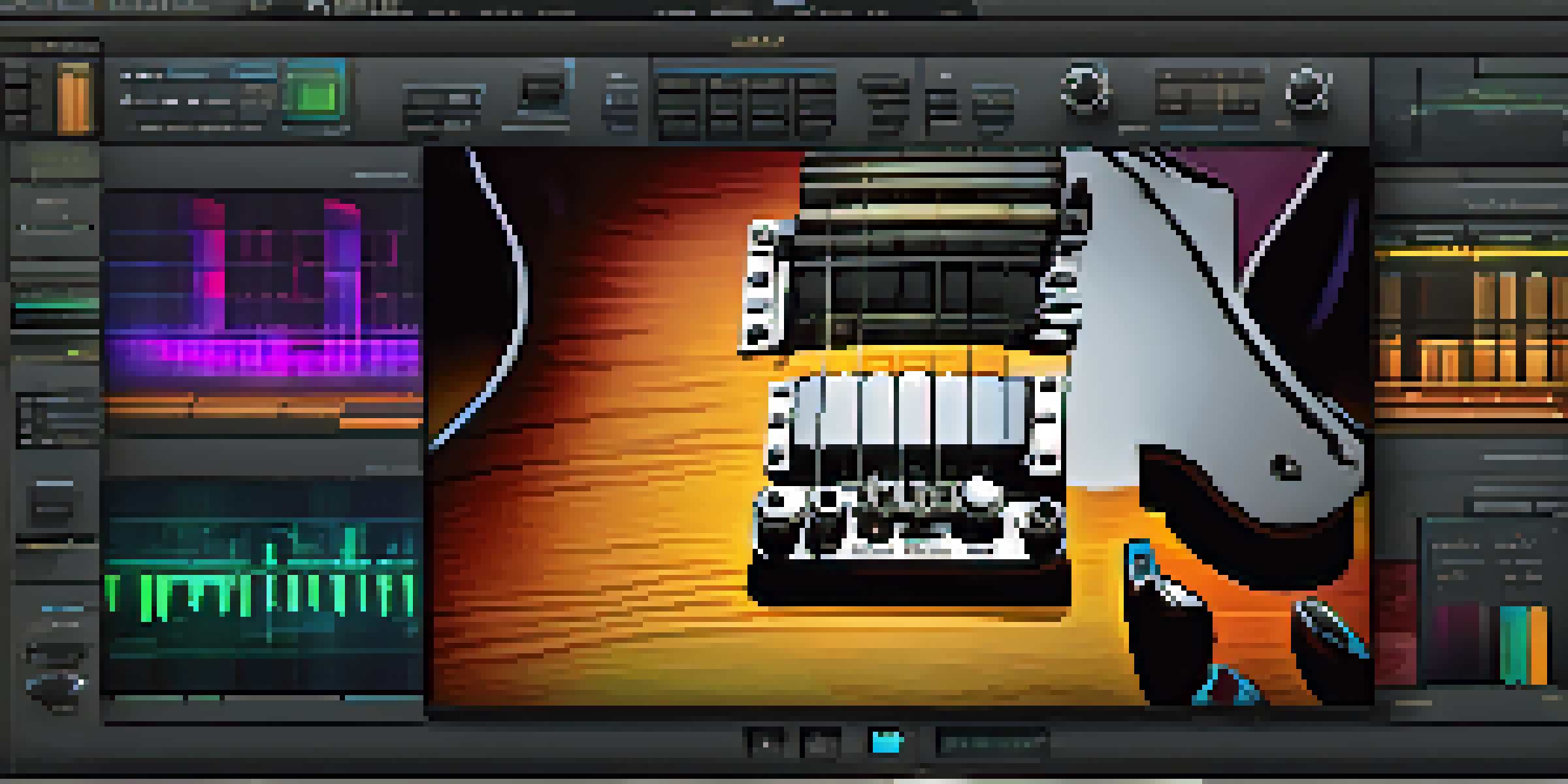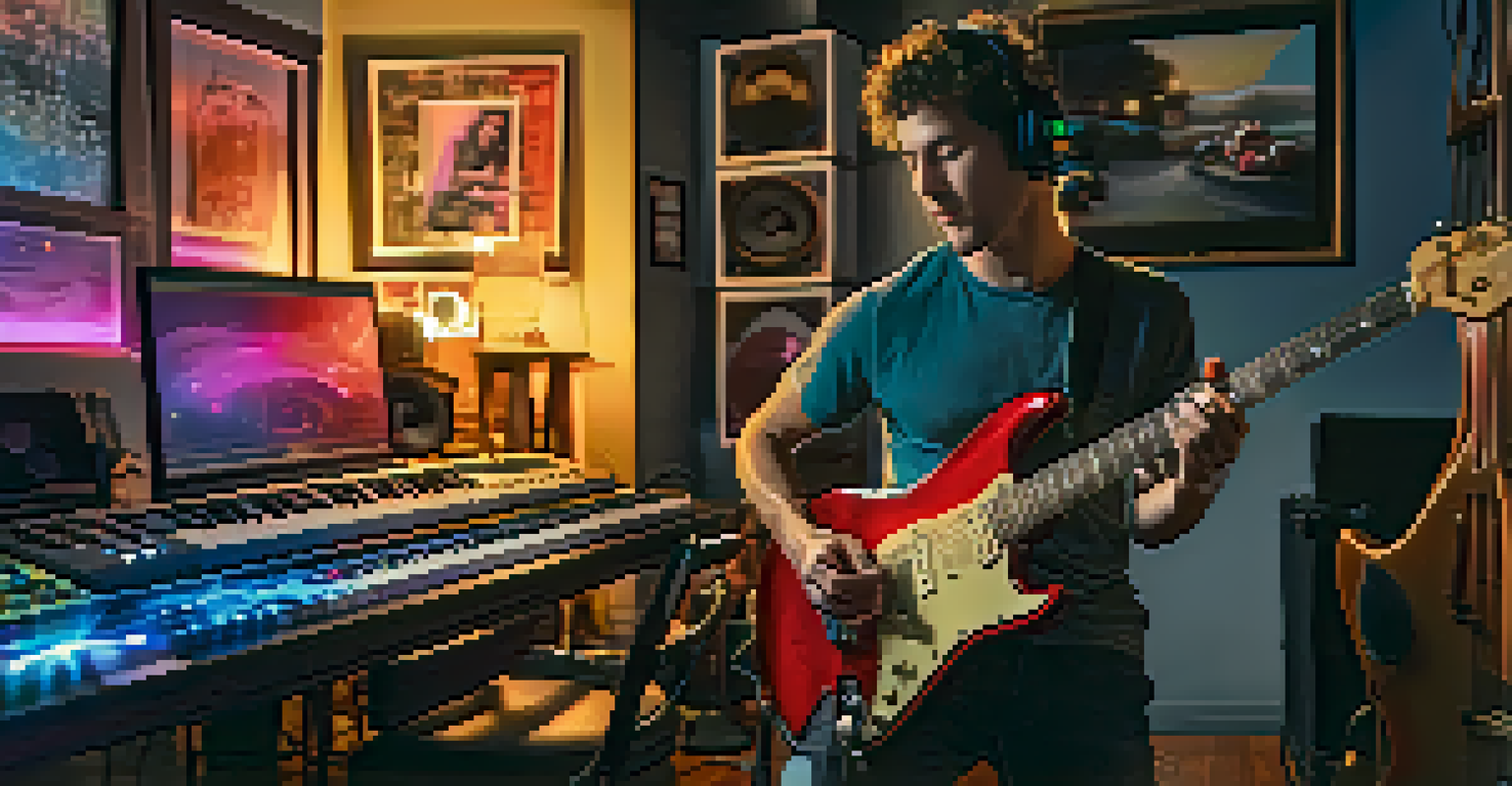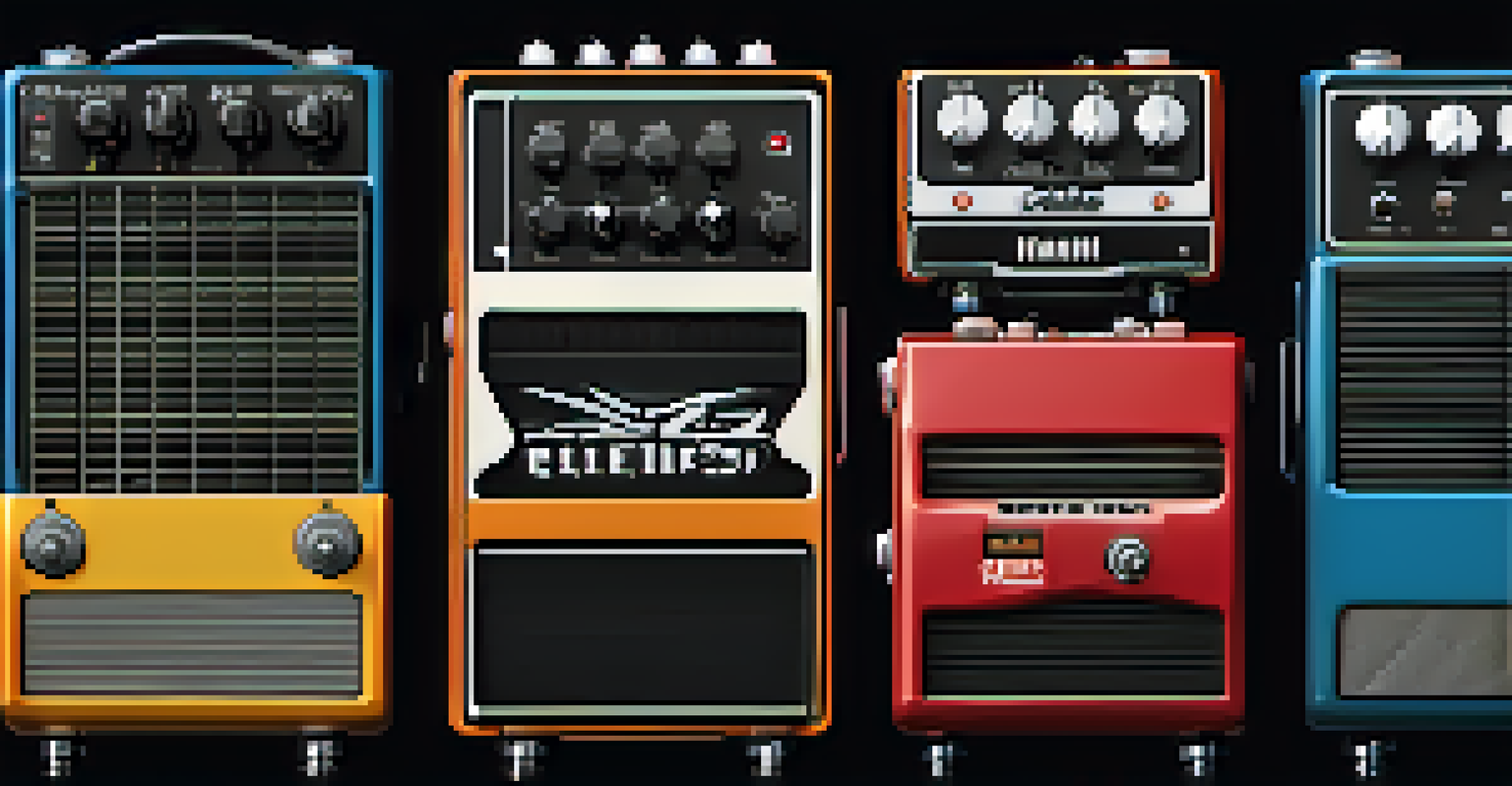Guitar Simulation Software: Real Instruments, Virtual Sounds

Understanding Guitar Simulation Software and Its Purpose
Guitar simulation software offers musicians the ability to replicate the sound of real instruments using digital technology. This innovative approach allows guitarists to explore a wide range of tones and effects without needing a physical collection of guitars and amplifiers. Whether you’re a beginner or a seasoned professional, this software opens up a world of possibilities, making it easier to experiment and create unique sounds.
Music is the shorthand of emotion.
One of the key benefits of using guitar simulation software is its versatility. You can simulate various guitar types, from acoustics to electrics, as well as emulate different amplifiers and effects pedals. Imagine being able to switch from a classic rock tone to a smooth jazz sound with just a few clicks! This flexibility is particularly valuable for songwriters and recording artists looking to achieve a specific vibe without the hassle of setting up multiple instruments.
Moreover, guitar simulation software often comes with an intuitive interface, making it accessible for users at all skill levels. With a simple layout and user-friendly controls, you can dive right in and start creating music right away. This ease of use encourages experimentation, allowing you to push the boundaries of your creativity while honing your skills.
How Guitar Simulation Software Works: A Peek Under the Hood
At its core, guitar simulation software utilizes digital signal processing (DSP) technology to replicate the sound of real guitars and amplifiers. This involves analyzing the audio characteristics of these instruments and creating algorithms that mimic their behavior. Think of it as a digital magician turning your computer into a virtual recording studio, where every strum and pluck sounds authentic.

The software typically includes a variety of presets that emulate specific sounds, allowing users to easily find the tone they’re looking for. These presets can represent famous guitar setups or unique custom sounds crafted by other users. For instance, if you’re aiming for the gritty tone of a legendary rock guitarist, you can simply select their preset and start playing right away, saving you time and effort.
Versatile Sound Exploration
Guitar simulation software allows musicians to easily replicate various guitar types, amplifiers, and effects, enabling creative experimentation without the need for multiple physical instruments.
Additionally, many guitar simulation programs allow for real-time processing, meaning you can hear the effects of your adjustments as you play. This immediacy is crucial for performance and songwriting, as it lets you fine-tune your sound on the fly. With a plethora of virtual pedals and effects at your disposal, you can create a customized audio experience that perfectly suits your musical style.
The Advantages of Using Guitar Simulation Software
One of the most significant advantages of using guitar simulation software is its affordability. Traditional gear, like high-quality guitars and amplifiers, can be quite expensive. In contrast, a single software package can provide you with access to an entire virtual arsenal of sounds for a fraction of the price, making it an attractive option for budget-conscious musicians.
The beautiful thing about learning is that no one can take it away from you.
Another benefit is the convenience of having everything you need right at your fingertips. Instead of lugging around heavy equipment, you can easily set up your digital workspace anywhere, whether it’s at home, in a practice room, or even on the go. This portability allows for spontaneous jam sessions and recording opportunities that might not be possible with traditional gear.
Finally, the ability to record directly into your computer makes it easier to capture your musical ideas as they come to you. With features like built-in multitrack recording and easy export options, you can get your music from concept to completion in no time. This streamlining of the creative process ensures that inspiration is never lost, allowing you to focus on what truly matters—making great music.
Popular Guitar Simulation Software: A Closer Look
There’s a wide range of guitar simulation software available today, each with its unique features and benefits. Some of the most popular options include software like AmpliTube, Guitar Rig, and Bias FX. Each of these programs offers a comprehensive suite of tools that cater to different styles and preferences, making it easy to find the right fit for you.
For example, AmpliTube is well-known for its user-friendly interface and vast library of tone presets, making it ideal for beginners. On the other hand, Guitar Rig provides advanced users with extensive customization options, allowing for intricate signal chains and sound design. Bias FX, meanwhile, excels in its realistic amp modeling, giving users the feeling of playing through a real tube amp.
Affordable Music Creation
This software provides an entire virtual arsenal of sounds at a fraction of the cost of traditional gear, making it an attractive option for budget-conscious musicians.
Exploring these programs can be an exciting journey, as each one offers unique features that can enhance your playing experience. Many of them also come with trial versions, so you can test the waters before committing. This flexibility allows you to find the software that best suits your musical style and workflow.
Integrating Guitar Simulation Software Into Your Setup
Integrating guitar simulation software into your existing setup can be a straightforward process. Most programs are compatible with digital audio workstations (DAWs), which are essential for recording and producing music. By connecting your guitar to an audio interface, you can easily route your signal into the software and start recording right away.
Consider setting up a dedicated workspace on your computer for all your music-related software, including your guitar simulation program. This organization will help streamline your workflow and make it easier to access your tools when inspiration strikes. You might also want to invest in a MIDI controller or footswitch for hands-free control of your software, allowing you to focus on playing without worrying about navigating your computer.
As you become more comfortable with the software, experiment with different settings and effects to find what works best for your sound. Don’t hesitate to dive into tutorials and online communities for tips and tricks. The more you explore, the more you’ll discover how to harness the full potential of guitar simulation software.
Common Misconceptions About Guitar Simulation Software
Despite the growing popularity of guitar simulation software, there are still several misconceptions surrounding its use. One common myth is that software can’t replicate the warmth and character of real instruments. However, advancements in technology have made it possible to create incredibly realistic simulations that capture the nuances of playing. Many professional musicians now rely on these tools for their recordings.
Another misconception is that using simulation software makes you less of a ‘real’ musician. In reality, these programs serve as powerful tools that can enhance your creativity and expand your musical palette. They allow you to explore new sounds and techniques that may not be feasible with traditional gear alone. Ultimately, it’s about how you use the technology to express your musical ideas.
Realistic Performance and Recording
Advancements in digital signal processing enable guitar simulation software to deliver authentic sounds, making it a valuable tool for both studio recordings and live performances.
Lastly, some people believe that guitar simulation software is only for studio use. While it’s true that these programs shine in recording settings, they can also be incredibly useful for live performances. With the right setup, you can take your virtual rig on stage, giving you access to a wide range of tones and effects without the bulk of physical equipment.
The Future of Guitar Simulation Software: Trends to Watch
As technology continues to evolve, the future of guitar simulation software looks incredibly promising. Developers are constantly working on improving the realism and versatility of these programs, incorporating artificial intelligence and machine learning to create even more authentic sounds. Imagine software that can learn from your playing style and suggest personalized tones—this could soon be a reality!
Moreover, we can expect to see more seamless integration with other music-making tools, such as virtual instruments and collaborative platforms. This interconnectedness will enhance the creative process, allowing musicians to collaborate and share their ideas more easily than ever before. The rise of cloud-based solutions will also make it simpler to access your software and projects from anywhere.

In addition, as more musicians embrace remote collaboration, guitar simulation software will likely play a pivotal role in how we create and share music. With the ability to record high-quality tracks from home, artists can connect with one another across the globe, breaking down geographical barriers. This shift will undoubtedly lead to exciting new sounds and styles that push the boundaries of what we consider music.